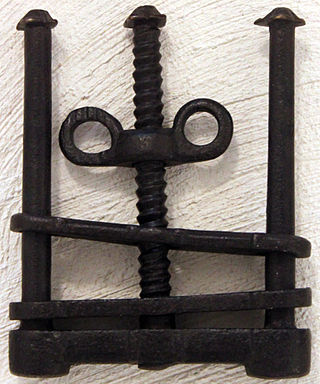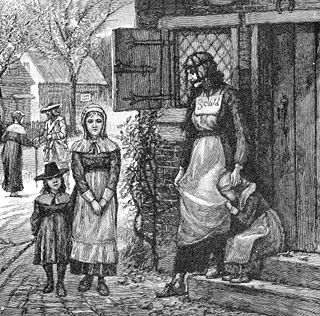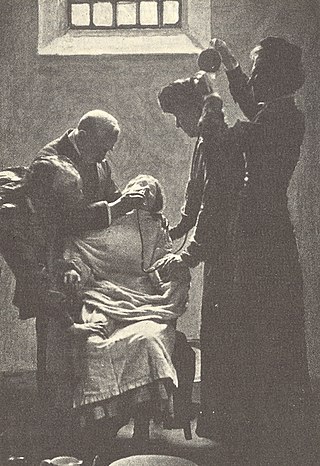
The Inquisition was a judicial procedure and a group of institutions within the Catholic Church whose aim was to combat heresy, apostasy, blasphemy, witchcraft, and customs considered deviant. Violence, torture, or the simple threat of its application, were used by the Inquisition to extract confessions and denunciations from heretics. Studies of the records have found that the overwhelming majority of sentences consisted of penances, but convictions of unrepentant heresy were handed over to the secular courts, which generally resulted in execution or life imprisonment. The Inquisition had its start in the 12th-century Kingdom of France, with the aim of combating religious deviation, particularly among the Cathars and the Waldensians. The inquisitorial courts from this time until the mid-15th century are together known as the Medieval Inquisition. Other groups investigated during the Medieval Inquisition, which primarily took place in France and Italy, include the Spiritual Franciscans, the Hussites, and the Beguines. Beginning in the 1250s, inquisitors were generally chosen from members of the Dominican Order, replacing the earlier practice of using local clergy as judges.

Pears are fruits produced and consumed around the world, growing on a tree and harvested in late summer into mid-autumn. The pear tree and shrub are a species of genus Pyrus, in the family Rosaceae, bearing the pomaceous fruit of the same name. Several species of pears are valued for their edible fruit and juices, while others are cultivated as trees.

A micrometer, sometimes known as a micrometer screw gauge, is a device incorporating a calibrated screw widely used for accurate measurement of components in mechanical engineering and machining as well as most mechanical trades, along with other metrological instruments such as dial, vernier, and digital calipers. Micrometers are usually, but not always, in the form of calipers. The spindle is a very accurately machined screw and the object to be measured is placed between the spindle and the anvil. The spindle is moved by turning the ratchet knob or thimble until the object to be measured is lightly touched by both the spindle and the anvil.

The rebec is a bowed stringed instrument of the Medieval era and the early Renaissance. In its most common form, it has a narrow boat-shaped body and one to five strings.

The hurdy-gurdy is a string instrument that produces sound by a hand-crank-turned, rosined wheel rubbing against the strings. The wheel functions much like a violin bow, and single notes played on the instrument sound similar to those of a violin. Melodies are played on a keyboard that presses tangents—small wedges, typically made of wood or metal—against one or more of the strings to change their pitch. Like most other acoustic stringed instruments, it has a sound board and hollow cavity to make the vibration of the strings audible.

The thumbscrew is a torture instrument which was first used in early modern Europe. It is a simple vise, sometimes with protruding studs on the interior surfaces. The crushing bars were sometimes lined with sharp metal points to puncture the nails. While the most common design operated upon a single thumb or big toe, variants could accommodate both big toes, all five fingers of one hand, or all ten toes.

A screwdriver is a tool, manual or powered, used for turning screws.

The iron maiden is a mythical torture device, consisting of a solid iron cabinet with a hinged front and spike-covered interior, sufficiently tall to enclose a human being. The first stories citing the iron maiden were composed in the 19th century. The use of iron maidens is considered to be a myth, heightened by the belief that people of the Middle Ages were uncivilized; evidence of their actual use has never been found. They have become a popular image in media involving the Middle Ages and involving torture chambers.

The term boot refers to a family of instruments of torture and interrogation variously designed to cause crushing injuries to the foot and/or leg. The boot has taken many forms in various places and times. Common varieties include the Spanish boot and the Malay boot. One type was made of four pieces of narrow wooden board nailed together. The boards were measured to fit the victim's leg. Once the leg was enclosed, wedges would be hammered between the boards, creating pressure. The pressure would be increased until the victim confessed or lost consciousness.

A scold's bridle, sometimes called a witch's bridle, a gossip's bridle, a brank's bridle, or simply branks, was an instrument of punishment, as a form of public humiliation. It was an iron muzzle in an iron framework that enclosed the head. A bridle-bit, about 5 cm × 2.5 cm in size, was slid into the mouth and pressed down on top of the tongue, often with a spike on the tongue, as a compress. It functioned to silence the wearer from speaking entirely, to prevent the women from nagging. The scold's bridle was used on women. This prevented speaking and resulted in many unpleasant side effects for the wearer, including excessive salivation and fatigue in the mouth. For extra humiliation, a bell could also be attached to draw in crowds. The wearer was then led around town by a leash.

Cock and ball torture (CBT) is a sexual activity involving the application of pain or constriction to the male genitals. This may involve directly painful activities, such as genital piercing, wax play, genital spanking, squeezing, ball-busting, genital flogging, urethral play, tickle torture, erotic electrostimulation, kneeing or kicking. The recipient of such activities may receive direct physical pleasure via masochism, or emotional pleasure through erotic humiliation, or knowledge that the play is pleasing to a sadistic dominant. Many of these practices carry significant health risks.

Force-feeding is the practice of feeding a human or animal against their will. The term gavage refers to supplying a substance by means of a small plastic feeding tube passed through the nose (nasogastric) or mouth (orogastric) into the stomach.

A gag is a device used in sexual bondage and BDSM roleplay. Gags are usually associated with roleplays involving bondage, but that is not necessarily the case. The person who wears the gag is regarded as the submissive partner, while the other is regarded as the dominant one. People may wear gags for a variety of reasons. Some people derive erotic pleasure from a gag, either in a submissive or dominant role. When combined with other physical restraints, the wearing of a gag can increase the wearer's sense of helplessness and anxiety level within a BDSM scene by rendering them unable to speak during sexual activity, which some people enjoy.

The Turn of the Screw is a 20th-century English chamber opera composed by Benjamin Britten, with a libretto by Myfanwy Piper, based on the 1898 novella The Turn of the Screw by Henry James.
A pear is a tree of the genus Pyrus and the fruit of that tree, edible in some species.

Dental instruments are tools that dental professionals use to provide dental treatment. They include tools to examine, manipulate, treat, restore, and remove teeth and surrounding oral structures.
A choke pear or chocky-pear is an astringent fruit. The term is used for the fruit of any variety of pear which has an astringent taste and is difficult to swallow.
The iron bit, also referred to as a gag, was used by enslavers and overseers as a form of punishment on slaves in the Southern United States. The bit, sometimes depicted as the scold's bridle, uses similar mechanics to that of the common horse bit. The scolds bridle however, is almost always associated with its use on women in the early 17th century and there are very few accounts of the device as a method of torture against black slaves under that particular name. As opposed to the whip, the iron bit lacks the historic, social, and literary symbolic fame that would make information on the use of the iron bit as accessible. Its use throughout history has warranted some attention though, mostly from literary texts. Even earlier, slave narratives and publications of newspapers and magazines from the 18th century on give evidence of this device being used to torture and punish slaves.

Music technology is the study or the use of any device, mechanism, machine or tool by a musician or composer to make or perform music; to compose, notate, playback or record songs or pieces; or to analyze or edit music.

















